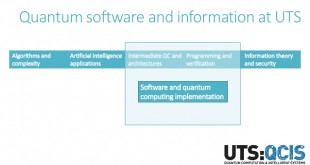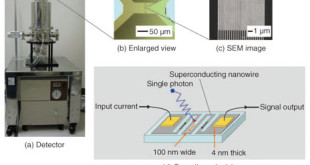Global Quantum computing race is heating up among nations as well as between different organizations. In a major development, the University of Science and Technology of China (USTC) in June 2021 demonstrated what researchers claim is the world’s fastest quantum computing processor, surpassing the previous and unofficial record held by …
Read More »Revolutionizing Genetic Engineering: How the Synthetic Biology Workstation Automates the Design-Build-Test Process
Introduction: Biotechnology is the technology that uses biological systems, living organisms, or derivatives thereof, to make or modify products or processes for commercial application or benefit to humanity. Operators in the Global Biotechnology industry primarily use living organisms or molecular and cellular techniques to develop products that are used in …
Read More »US Army Project Linchpin developing integrated AI based intelligence, cyber and electronic warfare capability
While the need for convergence of cyberspace operations and electronic warfare is recognized within the Department of Defense (DoD), differences between how these two capabilities are trained, resourced, organized and employed combined with the significant functional level differences between the two have hindered efforts to converge their capabilities. “The …
Read More »DARPA QuICC developing hybrid Quantum computer to solve optimization problems for Defense applications
Department of Defense (DOD) must solve many complex optimization problems to enable mission capabilities – from determining the most efficient way to distribute supplies to minimizing warfighters’ exposure to hostile forces. Solving these intricate scenarios is difficult, largely owing to the limitations of existing computing resources. Today, many optimization problems …
Read More »Material platforms for Photonic integrated circuits (PIC) enable LiDAR, quantum and neuromorphic computing
A photonic integrated circuit (PIC) or integrated optical circuit is a device that integrates multiple (at least two) photonic functions and as such is similar to an electronic integrated circuit. The major difference between the two is that a photonic integrated circuit provides functions for information signals imposed on optical …
Read More »Defense Acquisition moving towards “as-a-service” model
The rising cost of new weapons systems has long been a concern for the Department of Defense (DoD). And, as DoD seeks to transform itself for the 21st century, it can anticipate an extended period of downward budgetary pressure. Moreover, growing costs will require difficult choices for DoD just to …
Read More »Single photon detector (SPD) critical technology for quantum computers and communications, and submarine detection
The process of detecting light—whether with our eyes, cameras or other devices—is at the heart of a wide range of civilian and military applications, including light or laser detection and ranging (LIDAR or LADAR), photography, astronomy, quantum information processing, medical imaging, microscopy and communications. Light is also being used in …
Read More »Defense metaverse for military superiority
Metaverse is a vision of a highly immersive and interactive shared world inhabited by avatars of real people that will enable billions of people to work, play, collaborate and socialize in entirely new ways. As a concept, the Metaverse is a persistent, online, 3D universe that combines multiple virtual spaces. …
Read More »Global Brain-Computer Interface Market Analysis & Trends (2025–2034)
The global elderly population is expanding at an unprecedented pace, raising significant concerns about age-related health conditions and their socioeconomic impact. In 2019, there were 703 million persons aged 65 years or over in the global population. This number is projected to double to 1.5 billion in 2050. Globally, the …
Read More »Optical Amplifiers
The transmission loss of the light passing through the optical fiber is a very small value of less than 0.2 dB per km with a light wavelength in the 1,550 nm band. Therefore clearest optical fibers can transmit signals more than 100 kilometers without amplification-much farther than copper wires. When …
Read More » International Defense Security & Technology Your trusted Source for News, Research and Analysis
International Defense Security & Technology Your trusted Source for News, Research and Analysis




